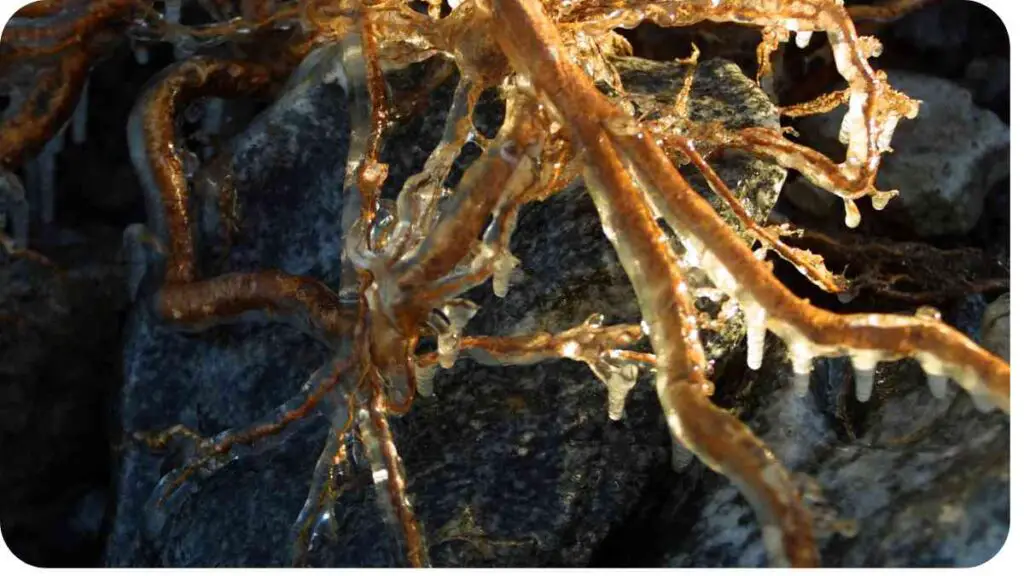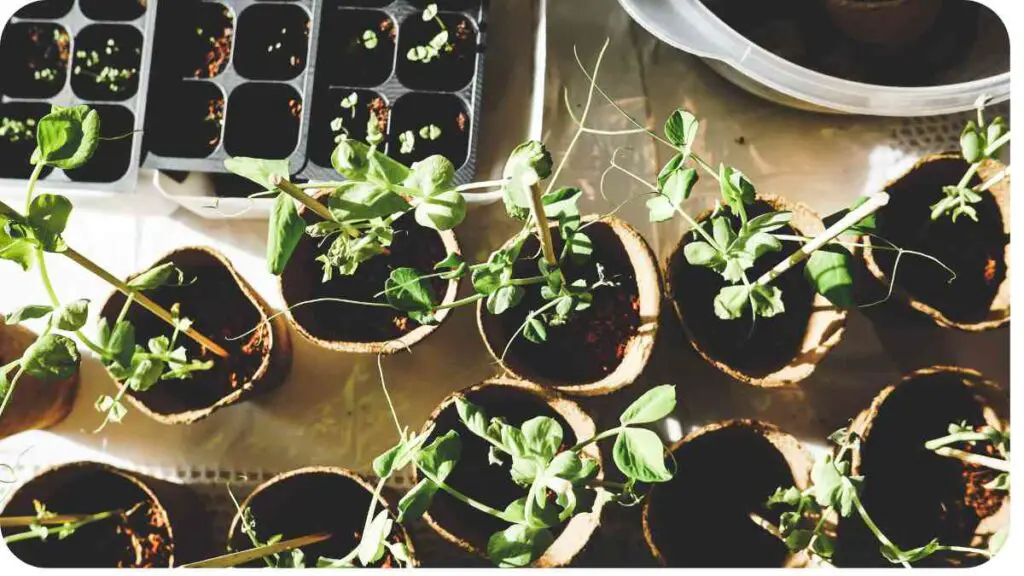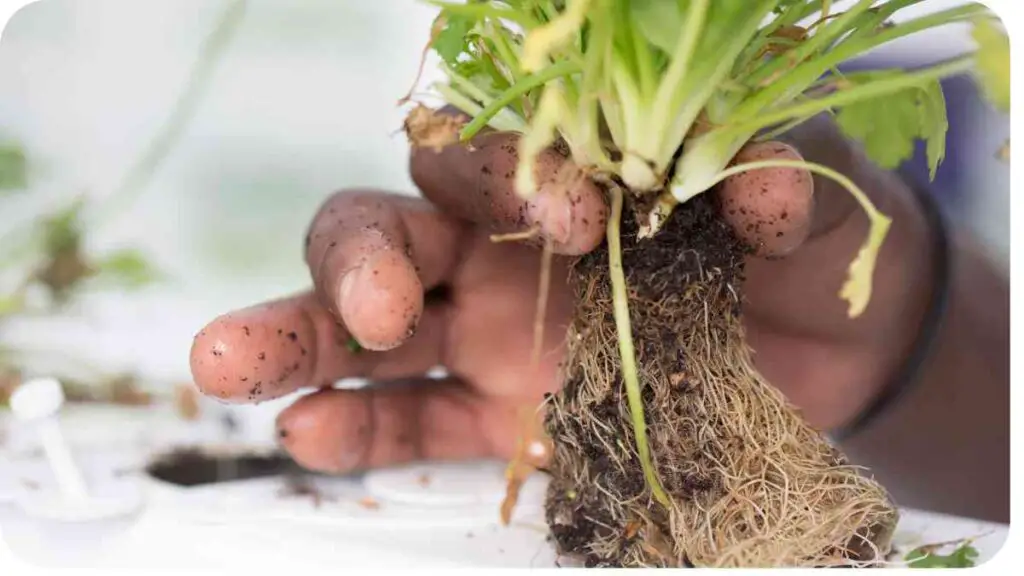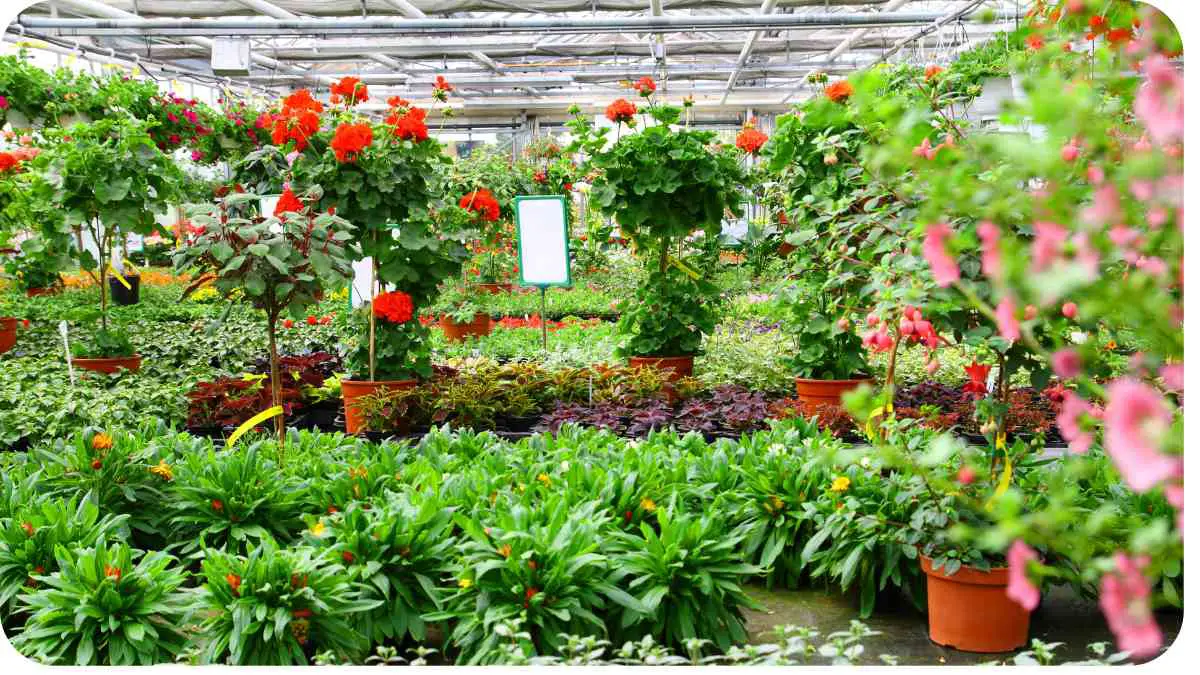AeroGarden has revolutionized indoor gardening, allowing enthusiasts to grow fresh herbs, vegetables, and flowers year-round, regardless of outdoor conditions. One common concern among AeroGarden users is the risk of root-rot, a fungal disease that can devastate plants in hydroponic systems.
In this guide, we’ll delve into why plants in AeroGarden typically don’t succumb to root-rot and how you can ensure your plants remain healthy and vibrant.
| Takeaways |
|---|
| AeroGarden utilizes aeroponic technology, which delivers oxygen-rich mist directly to the roots, minimizing the risk of root-rot. |
| Proper maintenance practices, including monitoring water levels, providing adequate lighting, and preventing contamination, are essential for preventing root-rot in AeroGarden. |
| Choosing suitable plants and troubleshooting early signs of root-rot can help ensure a successful growing experience with your AeroGarden. |
2. Understanding Root-Rot

Root-rot is a fungal infection caused by various pathogens, primarily Pythium spp., that thrive in overly moist conditions. In traditional soil-based gardening, overwatering is a common culprit. However, in hydroponic systems like AeroGarden, where plants are grown in water without soil, the risk of root-rot can be even higher if proper precautions aren’t taken.
Maintaining optimal temperature is crucial for hydroponic systems. Overheating can impact plant health and performance, affecting nutrient absorption and root development. Regular monitoring ensures efficient hydroponic operation and healthy plant growth.
The Aeroponic Advantage
To understand why AeroGarden plants are less prone to root-rot, let’s compare different hydroponic systems:
| Hydroponic System | Description | Advantages | Disadvantages |
|---|---|---|---|
| Aeroponics | Roots are suspended in air and misted with nutrient solution. | Efficient nutrient absorption, oxygenation of roots. | Requires precise misting technology, prone to clogging. |
| Deep Water Culture (DWC) | Roots submerged in nutrient solution. | Simple setup, low maintenance. | Risk of oxygen depletion, susceptibility to root-rot. |
| Ebb and Flow | Nutrient solution floods grow tray intermittently. | Provides oxygenation between flooding cycles. | Potential for uneven nutrient distribution, equipment failure. |
AeroGarden utilizes aeroponic technology, which delivers oxygen-rich mist directly to the roots, ensuring optimal conditions for growth while minimizing the risk of root-rot.
3. AeroGarden Design Features
AeroGarden’s innovative design incorporates several features that contribute to plant health and vigor:
| Feature | Description |
|---|---|
| LED Grow Lights | Energy-efficient LEDs provide the ideal spectrum for plant growth. |
| Automated Watering System | Ensures plants receive the right amount of water and nutrients. |
| Grow Pod Compatibility | Accommodates a variety of seed pods for different plants. |
| Adjustable Lamp Height | Allows for optimal positioning to accommodate plant growth. |
These design elements work in tandem to create an optimal environment for plant growth while minimizing the risk of root-rot.
4. Nutrient Delivery System
Ensuring proper nutrient delivery is crucial for preventing nutrient deficiencies and mitigating the risk of root-rot. Let’s compare different nutrient delivery systems:
Understanding the differences in water management between soil-based gardens and hydroponic systems is essential for successful plant cultivation. Proper irrigation techniques prevent issues like root rot, promoting optimal growth and maximizing yields in both setups.
| Nutrient Delivery System | Description | Advantages | Disadvantages |
|---|---|---|---|
| Liquid Nutrients | Pre-mixed liquid nutrients added to water reservoir. | Easy to use, precise nutrient control. | Requires frequent monitoring and adjustment. |
| Dry Nutrients | Powdered nutrients mixed with water to create nutrient solution. | Longer shelf life, cost-effective. | Requires accurate measuring, potential for user error. |
AeroGarden’s liquid nutrient system provides plants with essential nutrients in the correct proportions, minimizing the risk of nutrient imbalances that can lead to root-rot.
5. Proper Maintenance Practices
Maintaining your AeroGarden is key to preventing root-rot and ensuring the health and vitality of your plants. Here’s a weekly maintenance checklist to keep your AeroGarden running smoothly:
| Task | Frequency |
|---|---|
| Check water level | Daily |
| Add nutrients | Weekly |
| Clean pump and aerator | Weekly |
| Trim roots (if necessary) | Monthly |
Consistent maintenance will help prevent the buildup of algae, bacteria, and other pathogens that can contribute to root-rot.
6. Choosing Suitable Plants

Selecting the right plants for your AeroGarden can also play a significant role in preventing root-rot. While AeroGarden is versatile and can accommodate a wide range of herbs, vegetables, and flowers, some plants are more susceptible to root-rot than others. Opt for plants that thrive in aeroponic or hydroponic systems and have lower moisture requirements, such as:
Consumers often wonder about the safety of hydroponically grown vegetables. Exploring the question, are hydroponic vegetables safe to eat, reveals insights into nutrient content, pesticide use, and potential health benefits, offering reassurance to those considering hydroponic produce.
- Herbs like basil, mint, and parsley
- Leafy greens like lettuce, spinach, and kale
- Strawberries
- Cherry tomatoes
By choosing plants that are well-suited to the AeroGarden environment, you can reduce the risk of root-rot and ensure a successful harvest.
7. Monitoring Water Levels
Proper water management is crucial for preventing root-rot in AeroGarden. While the automated watering system takes care of most of the work, it’s essential to monitor water levels regularly. Ensure that the water level remains within the recommended range indicated by the AeroGarden’s water level indicator. Avoid overfilling the reservoir, as excess water can create conditions conducive to root-rot.
8. Providing Adequate Lighting
In addition to proper watering and nutrient delivery, adequate lighting is essential for healthy plant growth in AeroGarden. LED grow lights provide the ideal spectrum for plant photosynthesis and growth, ensuring that your plants receive the energy they need to thrive. Position the grow lights at the appropriate height above the plants, following the manufacturer’s recommendations based on the growth stage of your plants.
Organic gardening practices contribute significantly to soil health and overall plant vitality. Discovering how organic methods enhance soil structure, nutrient retention, and microbial activity underscores their importance in sustainable gardening and ecosystem preservation
9. Air Circulation and Temperature Control
Proper air circulation and temperature control are also crucial factors in preventing root-rot. Ensure that your AeroGarden is located in a well-ventilated area with adequate airflow. Avoid placing it in areas with stagnant air or high humidity, as these conditions can promote the growth of fungi and bacteria that cause root-rot. Additionally, maintain the temperature within the optimal range for plant growth, typically between 65°F and 75°F.
10. Preventing Contamination
Contamination from outside sources can introduce pathogens and pests that increase the risk of root-rot in AeroGarden. Take precautions to prevent contamination by:
- Washing hands thoroughly before handling plants or equipment.
- Disinfecting tools and equipment regularly.
- Using sterile growing media and seed pods.
- Keeping pets and other potential sources of contamination away from the AeroGarden.
By minimizing the risk of contamination, you can help ensure a healthy growing environment for your plants.
11. Dealing with Early Signs of Root-Rot

Despite your best efforts, you may still encounter early signs of root-rot in your AeroGarden. Common symptoms include wilting, yellowing leaves, and foul odor emanating from the roots. If you notice these signs, take immediate action to address the issue:
- Trim affected roots using sterile scissors to remove infected tissue.
- Increase air circulation around the plants to promote drying of the root zone.
- Adjust watering and nutrient delivery to prevent further moisture buildup.
By addressing root-rot early, you can prevent it from spreading and save your plants from further damage.
Compost enriches the soil with essential nutrients, enhances moisture retention, and promotes beneficial microbial activity. Exploring the benefits of using compost in a vegetable garden highlights its role in fostering healthy plant growth, improving soil fertility, and reducing the need for synthetic fertilizers.
12. Troubleshooting Tips
If you’re experiencing persistent issues with root-rot or other problems in your AeroGarden, here are some troubleshooting tips to consider:
- Check pH levels: Ensure that the pH of the nutrient solution remains within the optimal range for plant growth (typically between 5.5 and 6.5).
- Inspect roots: Regularly inspect the roots of your plants for signs of discoloration, mushiness, or foul odor, which may indicate root-rot.
- Adjust lighting: If plants are exhibiting symptoms of stress, such as leaf discoloration or stunted growth, consider adjusting the positioning or intensity of the grow lights.
- Seek expert advice: If you’re unsure how to address a specific issue or if problems persist despite your efforts, don’t hesitate to seek advice from experienced AeroGarden users or gardening experts.
By troubleshooting effectively, you can identify and resolve issues before they escalate, ensuring a successful growing experience with your AeroGarden.
13. Conclusion
In conclusion, AeroGarden provides an ideal environment for growing healthy, vibrant plants without the risk of root-rot commonly associated with traditional soil-based gardening.
By understanding the factors that contribute to root-rot and implementing proper maintenance practices, you can enjoy a bountiful harvest of fresh herbs, vegetables, and flowers year-round. Remember to choose suitable plants, monitor water levels, provide adequate lighting, and take precautions to prevent contamination. With proper care and attention, your AeroGarden can thrive, providing you with a continuous supply of homegrown goodness.
Further Reading
- Root Rot Discussion on AeroGarden Addicts: Join the discussion on AeroGarden Addicts forum to learn from the experiences of other users dealing with root-rot in their AeroGarden.
- Troubleshooting Guide from AeroGarden: Explore AeroGarden’s official troubleshooting guide for tips on addressing issues like unhealthy plant growth.
- Root Rot in AeroGarden: A Case Study: Read about a real-life experience with root-rot in an AeroGarden and how it was managed on IndoorGardener.org.
FAQs
What is root-rot and why does it occur?
Root-rot is a fungal disease caused by pathogens that thrive in overly moist conditions. It occurs when the roots of plants become infected, leading to decay and ultimately plant death.
How can I prevent root-rot in my AeroGarden?
To prevent root-rot, ensure proper water management, adequate air circulation, and temperature control. Choose suitable plants, monitor water levels, and take precautions to prevent contamination.
What are the signs of root-rot in AeroGarden plants?
Signs of root-rot include wilting, yellowing leaves, foul odor from the roots, and slimy or mushy root tissue. Regularly inspect your plants for these symptoms and take action if detected.
Can I save plants affected by root-rot?
In some cases, plants affected by root-rot can be saved if the disease is caught early. Trim affected roots, improve growing conditions, and adjust watering and nutrient delivery to promote recovery.
How do I troubleshoot root-rot issues in my AeroGarden?
Troubleshooting root-rot issues involves checking pH levels, inspecting roots for signs of infection, adjusting lighting and nutrient delivery, and seeking advice from experienced growers if problems persist.

